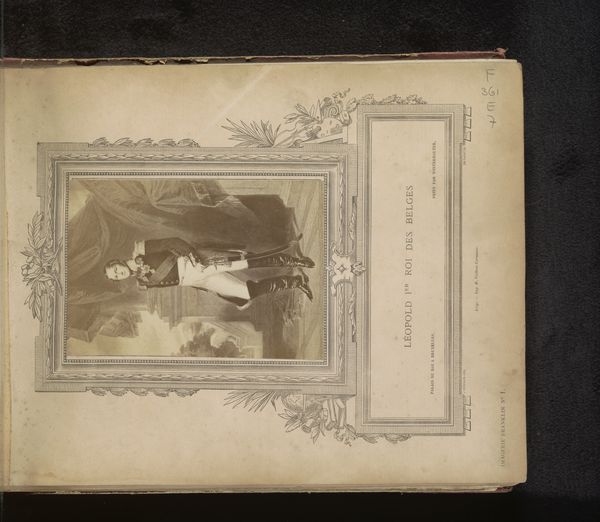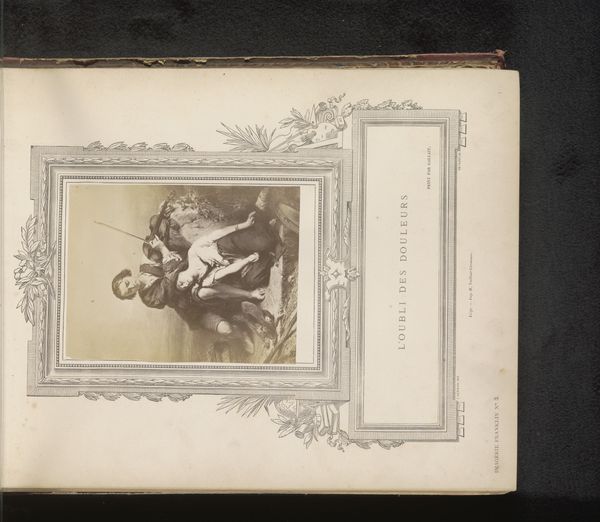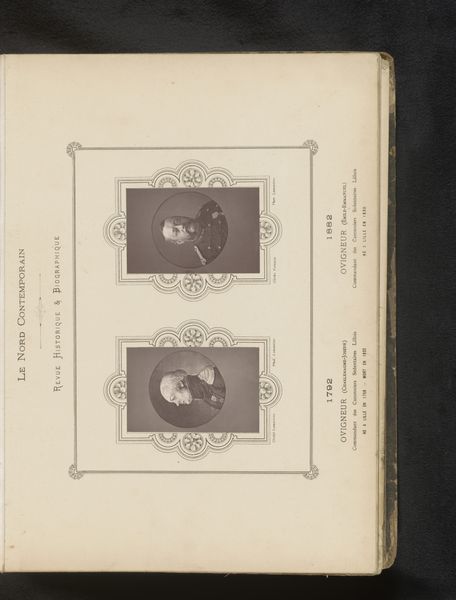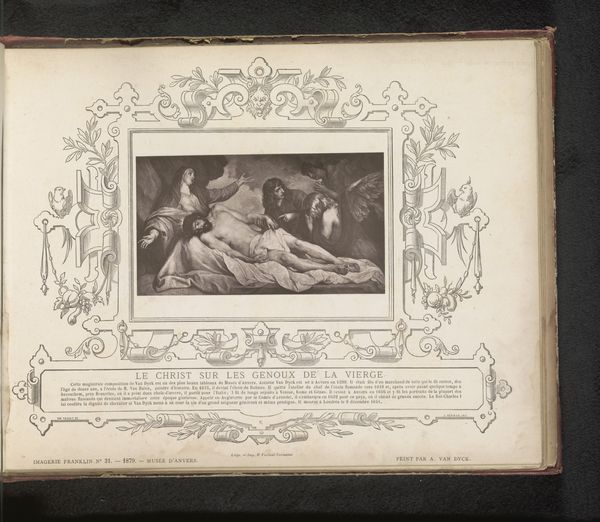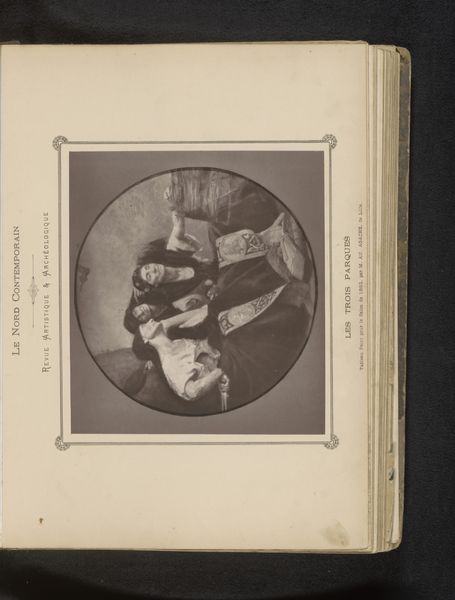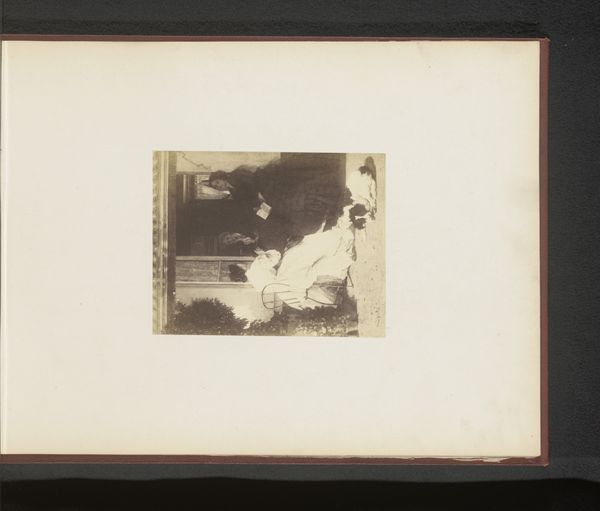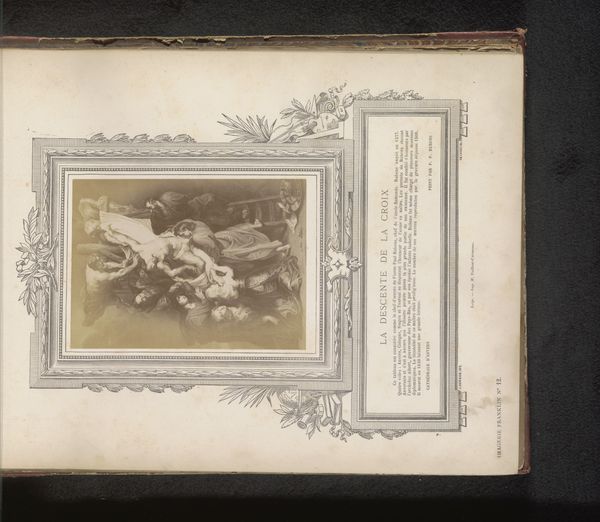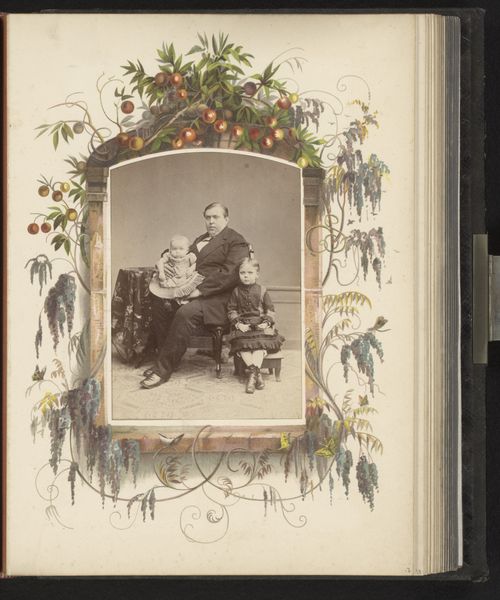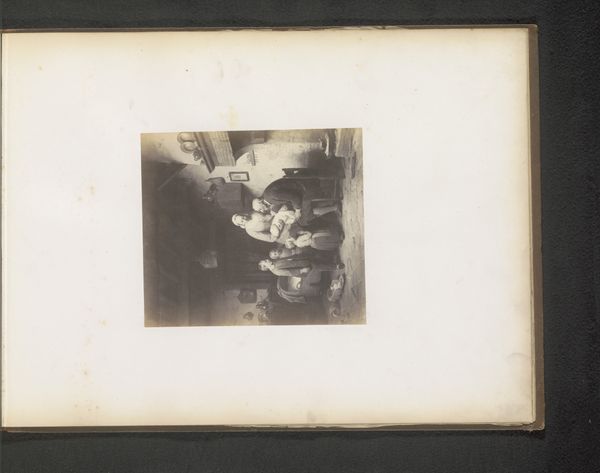
print, daguerreotype, photography, albumen-print
#
portrait
# print
#
daguerreotype
#
photography
#
coloured pencil
#
albumen-print
Dimensions: height 138 mm, width 96 mm
Copyright: Rijks Museum: Open Domain
Curator: Welcome to this discussion about a fascinating period piece entitled "Portret van Rudolf van Oostenrijk en Stefanie van België", that is, "Portrait of Rudolf of Austria and Stephanie of Belgium." Created before 1880, this piece utilizes a blend of daguerreotype, albumen print, and photographic techniques, resulting in a really interesting aesthetic. Editor: My first impression is of formality and stillness, really emphasized by the muted sepia tones and very contained composition. It feels incredibly staged, as one might expect for such a portrait. Curator: Precisely, and it is worth mentioning the rigid constraints placed on royal subjects in late 19th-century portraiture. Consider Stephanie's Belgian heritage and Rudolf's role as Crown Prince—this photograph wasn't just about aesthetics. It served as a powerful symbolic communication, legitimizing and solidifying dynastic alliances across European powers. Editor: Yes, the rigidity really jumps out. Stephanie is positioned slightly forward of Rudolf, drawing one's attention towards her elaborate gown with its intricate detailing. It definitely highlights the semiotic value of clothing, almost signaling royal status and dynastic wealth. Her delicate gloves and small bouquet of flowers further reinforce this image. Curator: And we see Rudolf, posed but a little stiffly, I might add. His military regalia is a really important aspect of this photograph because of how closely it tied to notions of duty, honor, and imperial power at that time. Consider the historical narrative around Rudolf’s tragic later life; his strict upbringing and inability to marry as he pleased underscores issues of autonomy. Editor: That is true. But when my eye falls on the bordering frame surrounding the portrait, I note its architectural precision, which mirrors, in a way, the structured lives of those depicted, reflecting rigid constraints and adherence to protocol. And that also is part of a long tradition in how photographs, especially portraits, have been mounted and displayed in albums. Curator: The surrounding decor, seemingly decorative, hints at the cultural politics enmeshed within familial portraiture—a projection of idealized status interwoven deeply within societal expectations. Editor: Seeing it laid out like this really reminds one of just how technically demanding photography would have been at the time. It makes you notice that level of precision. A remarkable demonstration of what an albumen print can offer, and such intricate tonality achieved within monochrome! Curator: The portrait, when understood through its historical, social, and even emotional implications, offers an invaluable perspective. The subjects exist at this intersection, where individual experience collides with the pressures and demands of duty and empire. Editor: Indeed, and analyzing it as we have from technical and artistic standpoints really emphasizes its place within art history.
Comments
No comments
Be the first to comment and join the conversation on the ultimate creative platform.


